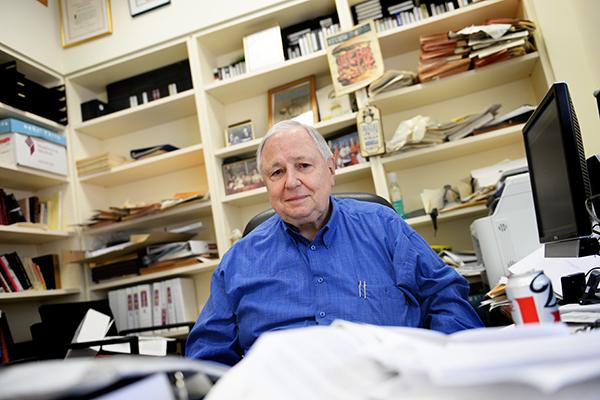
After GW chooses the law school’s dean this summer, the new leader will have to grapple with slumping enrollment and pressure to rethink what experts have called an unsustainable business model.
As applications to law schools across the country continue to decline, the dean will need to decide whether GW should swell the size of its incoming classes, at the expense of selectivity, or keep first-year classes at about 500 students, Provost Steven Lerman said.
The GW Law School drastically increased the number of students it admitted to bring in enough tuition dollars to keep the school running this year, but has laid out few long-term plans for change under interim dean Gregory Maggs.
Last year, GW received about 3,000 fewer applications than it did five years ago. Officials have waited to see if year-to-year fluctuations would lead to an overall downward trend. Those ups and downs have lead to vastly different class sizes, which have impacted finances that rely on tuition for revenue.
The high-stakes decision will come after Moody’s Investor Services released a report earlier this month concluding that law schools would have to change their business models because national applications likely will not rebound.
Lerman said the dean candidates who have visited campus this spring had a range of opinions of how interest in law schools would change.
“That’s a strategic question for the next dean, and different candidates have had different views on that,” he said.
Across the country, law professors have floated new models for schools to roll back costs. The American Bar Association has started looking into dropping the third year of law school or designating it as a hands-on legal work-study year to entice more students.
John Banzhaf, a law professor at GW, has proposed that law schools offer more online classes. Those courses would not need as many professors: just one could teach a large number of full-tuition-paying students.
It’s a radical idea – especially for law schools that have shied away from creating online degrees – but one he says could lower schools’ expenses as interest in law school plummets.
“The way we teach today is basically the same as Langdale did at Harvard in 1890 when he invented the case method,” Banzhaf said. “There’s the old adage of ‘If it ain’t broke don’t fix it,’ and we’ve been doing that for a while, and now many of us are beginning to realize it is broke and we’ve got to fix it.”
Paul Campos, a law professor at the University of Colorado at Boulder and author of the book “Don’t Go to Law School (Unless),” said while experts are unsure if interest in law school will continue to decline, he understands why Moody’s is concerned by the massive amount of tuition revenue most schools are losing.
“Traditionally, law schools have been seen as quasi-profit centers by the universities. They’re generating surplus income, helping to subsidize other parts of the university,” Campos said.
GW increased the size of its first-year law class this year by 22 percent to make sure it made enough to fund its $80 million annual budget. The No. 20 law school subsequently saw its acceptance rate rise by about 20 percentage points.
The school’s former dean, Paul Schiff Berman, significantly cut the first year’s class size when he oversaw admissions during his 18-month tenure. A few months after the class arrived on campus, Berman moved into the provost’s office after faculty nearly held what they said would have been the University’s first successful vote of no confidence.
Campos said law schools have spent more in recent years because top schools are known for expanding programs and services.
“What you have then is that’s what the ideological justification for spending ever larger amounts of money. It’s a vicious cycle,” he said.
GW’s law school has poured money into funding new programs, like one that subsidizes recent graduates’ unpaid internships for up to a year if they cannot find paid employment. One-fifth of the Class of 2012 participated in the program.
Some experts argue that law graduates need more hands-on legal experience before graduating, which a growing number of GW students each semester look to gain from working at one of the school’s 13 legal clinics. The clinics offer free legal services to community members who cannot afford an attorney.
Alberto Benítez, a professor who oversees the school’s immigration clinic, said the clinical experience helped many of his students find jobs.
“Thinking back to last year or the year before, a clinical experience did help them get a job, either because they had it on their resumé and employers like clinical students, or they had experience on their resumé and employers think, ‘That experience is something I don’t have to teach them,’” he said.







